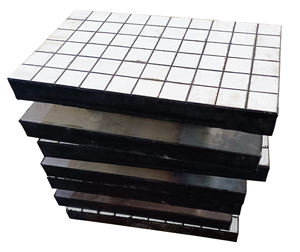Discover Premium Ceramic Products | Durability & Elegance United | Advanced Ceramics
1. Introduction
In industrial and laboratory settings, the demand for high-performance refractory materials has surged—especially following last week’s announcement by the U.S. Department of Energy about new funding for advanced ceramics in clean energy manufacturing. Among these materials, the silicon carbide crucible stands out for its exceptional thermal conductivity, chemical inertness, and resistance to thermal shock. Whether you’re melting metals, firing ceramics, or conducting high-temperature experiments, knowing how to properly use and maintain your silicon carbide crucible is essential to avoid costly failures and ensure consistent results.

2. Understanding Your Silicon Carbide Crucible
A silicon carbide crucible is made from sintered silicon carbide—a compound renowned for its hardness, thermal stability, and durability at temperatures exceeding 1600°C. Unlike traditional clay-graphite crucibles, silicon carbide offers superior resistance to oxidation and molten metal corrosion. It’s often confused with other advanced ceramics like silicon nitride, but while silicon nitride crucible factory products excel in mechanical strength and thermal shock resistance in specific applications, silicon carbide remains the go-to for high thermal conductivity and cost-effective performance.
2.1. Common Applications
Silicon carbide crucibles are widely used in foundries, jewelry casting, and research labs. They’re also closely related to other silicon carbide components such as silicon carbide ceramic tubes for furnace use, silicon carbide burner nozzles, and even silicon carbide ceramic baking dishes for high-heat culinary applications. Though items like silicon carbide ceramic dinner plates or silicon carbide ceramic salad bowls are more decorative, they share the same base material properties that make industrial versions so reliable.

3. Step-by-Step Guide to Using a Silicon Carbide Crucible
3.1. Pre-Use Preparation
Before first use, inspect your silicon carbide crucible for cracks, chips, or surface defects. Even minor damage can lead to catastrophic failure under heat. Clean it with a soft brush and distilled water—never use soap or abrasive cleaners. Allow it to air-dry completely. If you’re comparing materials, note that boron carbide vs silicon carbide often comes up in extreme wear applications, but for crucibles, silicon carbide’s balance of cost and performance wins out.

3.2. Proper Heating Protocol
Always preheat your crucible gradually. Place it in a cold furnace or on a low-heat source and ramp up the temperature slowly—no more than 150–200°C per hour until you reach 600°C. This prevents thermal shock, a leading cause of cracking. Once preheated, you can increase the temperature more rapidly to your target. Avoid direct flame impingement; use silicon carbide brick or silicon carbide ceramic columns to support even heating.
3.3. Loading and Melting
Load materials gently to avoid mechanical impact. Overfilling increases spill risk and thermal stress. For metal melting, ensure the charge is dry—moisture causes steam explosions. Use tongs designed for high-temp ceramics, not metal tools that can scratch or chip the crucible. If you’re working with reactive alloys, consider lining the crucible with a compatible flux, but verify compatibility first.
4. Maintenance and Troubleshooting
4.1. Cleaning After Use
Let the crucible cool naturally in the furnace or on a ceramic fiber board—never quench in water. Once cool, remove residue with a soft scraper or brush. For stubborn deposits, heat to 800°C in an oxidizing atmosphere to burn off organics. Avoid acid cleaning unless absolutely necessary, as it can degrade the silicon carbide matrix over time.
4.2. Common Problems and Solutions
- Cracking: Usually due to rapid heating/cooling or mechanical shock. Solution: Always follow gradual ramp rates and handle with care.
- Glazing or Surface Erosion: Caused by prolonged exposure to aggressive slags or molten metals. Solution: Use a higher-purity silicon carbide crucible or apply a protective coating.
- Reduced Lifespan: Often from improper storage. Store in a dry, dust-free area on a silicon carbide ceramic plate or rack—never on concrete or metal.
5. When to Replace Your Crucible
Even with perfect care, silicon carbide crucibles wear out. Signs include deep pitting, wall thinning, or visible cracks. Don’t risk a melt spill—replace it. For specialized needs, consider alternatives like a custom silicon nitride heat shield or silicon nitride plate if your process demands higher fracture toughness, though these come at a premium cost tied to the high purity silicon nitride powder market.
6. Related Silicon Carbide Products Worth Knowing
While your focus may be on crucibles, it’s helpful to recognize the broader ecosystem: rbsic silicon carbide tile blocks for kiln linings, silicon carbide ceramic pipes for corrosive fluid handling, silicon carbide discs for grinding, and even silicon carbide ceramic disk taps for plumbing. Each leverages the same core properties—hardness, thermal stability, and chemical resistance—but in different forms like silicon carbide tube furnace components or silicon carbide thermocouple protection tubes.
7. Conclusion
Using a silicon carbide crucible correctly isn’t just about following steps—it’s about respecting the material’s limits and leveraging its strengths. With proper preheating, gentle handling, and routine maintenance, your crucible can deliver hundreds of successful melts. And while products like silicon carbide ceramic casserole dishes or silicon carbide black ceramic plates bring this advanced material into everyday life, their industrial cousins remain indispensable in high-stakes thermal processes. Treat your crucible well, and it will serve you reliably for years.
Our Website founded on October 17, 2012, is a high-tech enterprise committed to the research and development, production, processing, sales and technical services of ceramic relative materials such as How. Our products includes but not limited to Boron Carbide Ceramic Products, Boron Nitride Ceramic Products, Silicon Carbide Ceramic Products, Silicon Nitride Ceramic Products, Zirconium Dioxide Ceramic Products, etc. If you are interested, please feel free to contact us.


